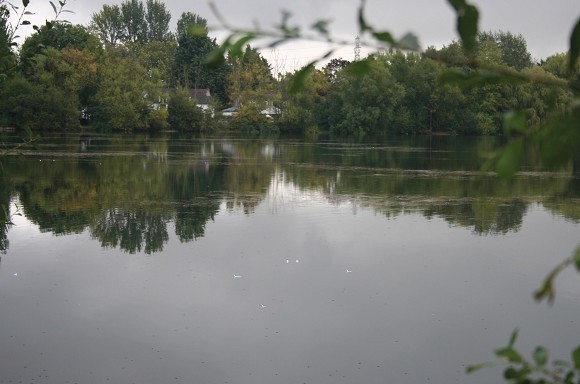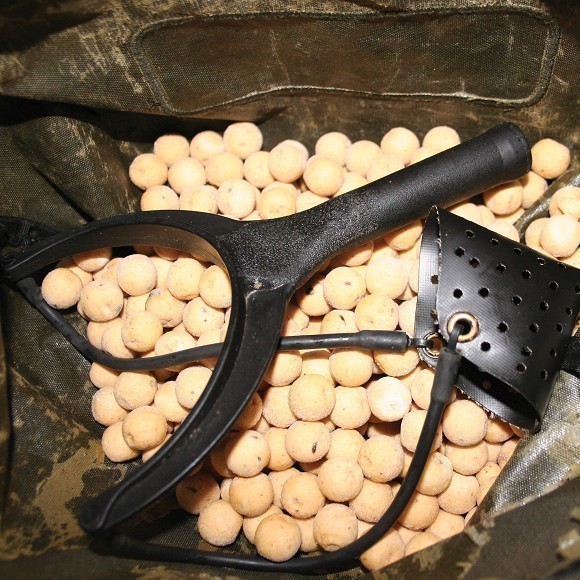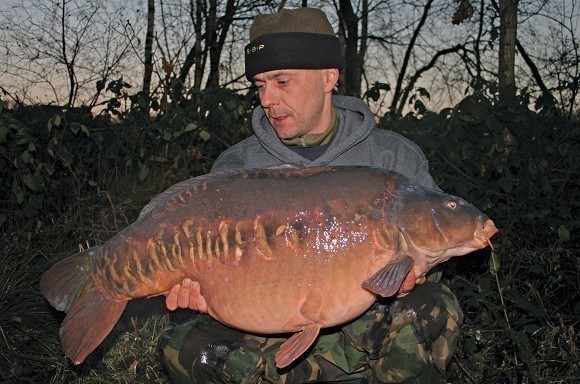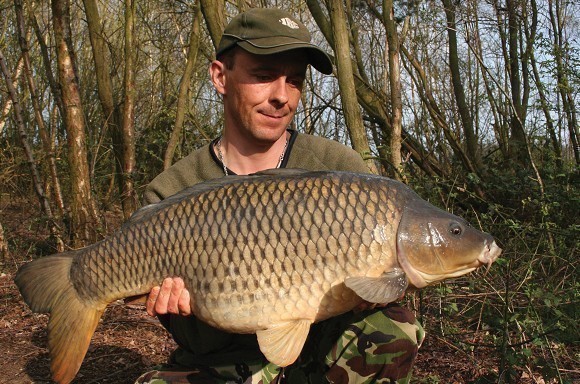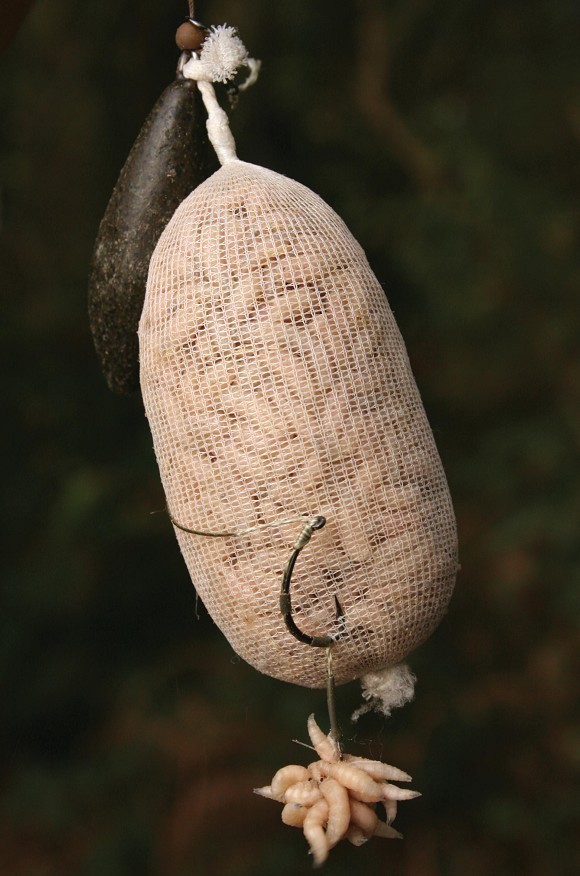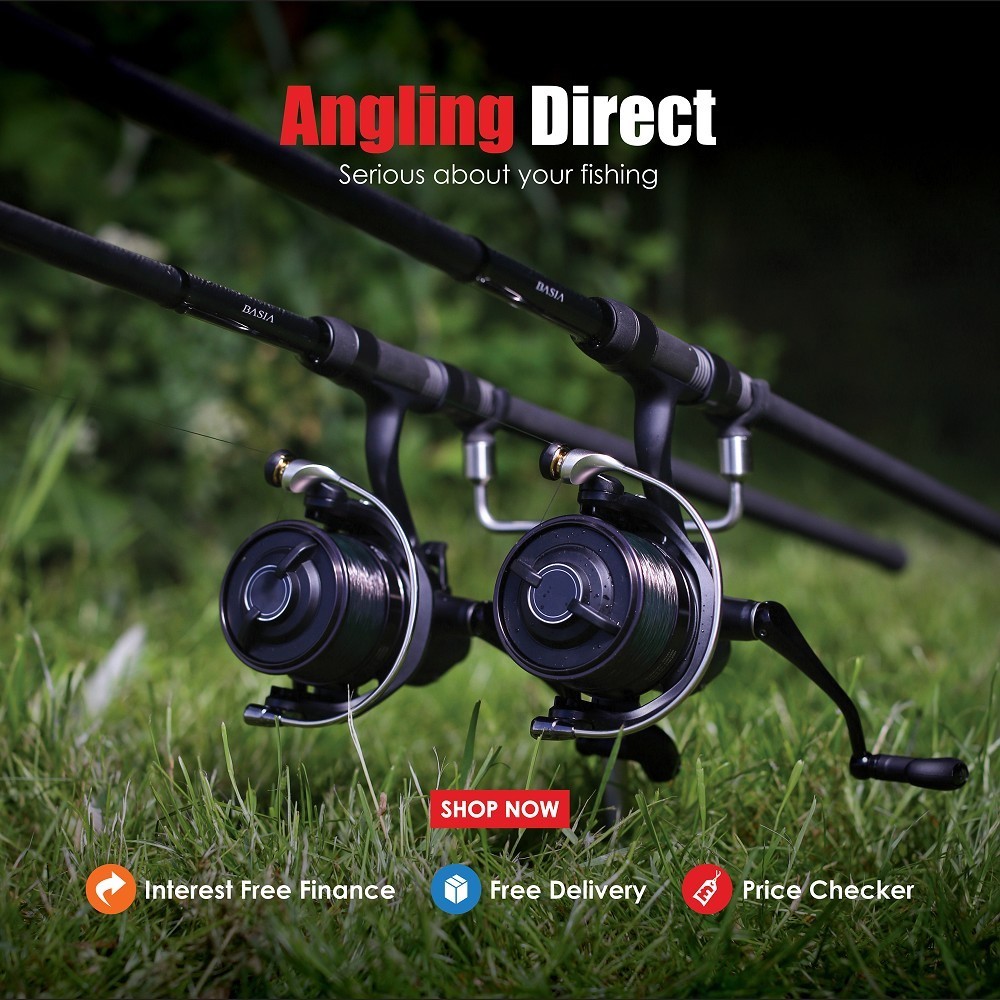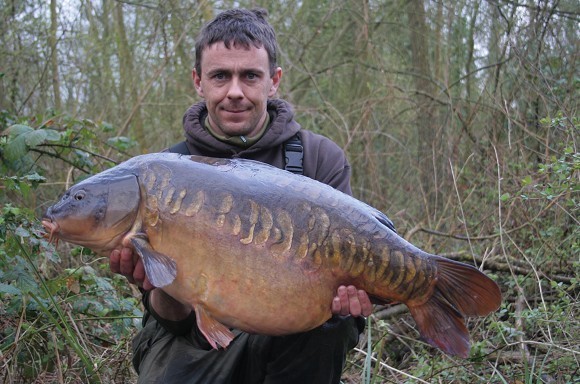
5 things I've learnt about winter fishing
Nigel Sharp reveals the top five things that he's learnt about winter carp fishing over the years
01 Choice of water for winter campaign
Right, being as this is about what I’ve learnt, I might as well take it from the top and start off with the choice of water – and this goes right back to the early 80s when I first started doing a bit of winter carp fishing on the Pike Pit at Frimley. Way back then we never gave this much thought and just loved the fact that we could catch carp all year round but like they say, hindsight is a wonderful thing and since those early days of mis-spent youth I’ve come to realise that due to the Pike Pit being a very shallow, weed-free, line-dragged gravel pit, its make up made it respond very well to very slight changes in the weather. I suppose it was just a case of live and learn and since those great days of catching doubles on frosty mornings I’ve had the pleasure of fishing a variety of different waters and in doing so I’ve been able to compare results. In doing this I’ve come to the conclusion that without a shadow of doubt the shallower, weed-free waters are definitely much more productive than their deeper cousins are. Like I said, they do respond quicker to slight changes in the weather but I also think that due to their make-up there is less likely to be large areas of deep, cold water.
It’s a hard thing to explain, but in brief if there is a lot of dead or dying weedbeds forming underwater dams in a deep lake, these can affect the undertows caused by the winds and in-turn with the lack of water movement this can cause big areas of cold stationary water with low levels of oxygen. If you look at it like this you’ll no doubt start thinking in the same way as I do and your ideal winter water would be shallow, weed-free and have the odd snaggy areas like fallen trees or dead lily beds to cast at.
02 Keeping the bait going in
Again, going right back to the early days on Frimley’s Pike Pit (Pit 1) one thing that we all did was to keep the bait going in. Just like the choice of water, this was something we did because we didn’t know any different, but now with 30 years experience of fishing different waters under my belt, it is obvious that once you have set out your stall to fish a water during the colder months, the most important thing to do to keep them moving is to keep feeding them.
Luckily for me I lived in the Blackwater Valley for all of my angling life so with a lot of waters local to me I’ve never had to travel much further than 20 miles to do any of my main fishing. This in-turn has made it easy for me (provided the water isn’t frozen) to keep the bait going in on a little-and-often basis. By looking at my past results it has become fairly obvious that all the while I have (so to speak) kept up the momentum of the bait going in, the bites have just kept on coming throughout past winters.
If I look at the times when I have let up with the regular baiting like I did one winter on Frimley’s Pit 3 I have completely stopped catching and even the last week of that season was a complete waste of time as they just simply didn’t wake up until the season was over.
So what I’m trying to say is if you keep feeding them, they’ll keep feeding. As sad as this might sound to some of you, but in an effort to keep things going rather than have a repeat of the Pit 3 scenario, I’ve even been known to nip out over the Christmas break to drive a near 40 mile round trip just to throw a few handfuls of baits on a couple of spots. Although the results of all of that hard work weren’t to come my way until late February when I did start catching, a couple of large thirties were amongst the fish I caught so I considered it worth going to those extra lengths to keep things going..
03 How shallow can they be caught?
Now this is one thing that I have come to realise over the last decade or so. In the past my friends and I have been very guilty of saying how a certain area will be a good winter area because it’s deeper than the rest of the lake. Quite often we did get it right and reaped the rewards but in more recent years I have been lucky enough to gain tickets and permission to fish some lovely waters with some extremely shallow areas. Having fished these waters during the winter months I have found that I have caught more fish from areas with depths of less than 3ft than I have from the deeper water which goes down to 10ft on one part of the lake and nearly 30ft on the other. When I really think about it, the only time I did actually catch from the deeper water, it was right at the edge of a major depth change from shallow to deeper water so in more recent years it’s the shallow water that I’m more interested in.
If I were to look at this (excuse the pun) more in-depth, I’d probably find that most of what I have caught from shallow water during recent winters were on days when there was a bit of faint winter sunshine and milder days. Whether the increase in air temperature or sunlight was enough to increase the water temperature or it was just the naturally cold-blooded fish seeking out some rays to soak up I can’t be sure, but whatever the reason, I have managed to catch enough fish to boost my confidence to fish very shallow water during the winters.
On one lake which I can’t name or publish any pictures of, it’s that rare for one to get caught from the deeper water during the winter months that the regulars don’t even bother fishing in it until mid-March now. It’s funny how things and our attitudes change over the years but as we are always learning, it’s what keeps a lot of us going from one year to the next.
04 Zig Rigs
Again, these are a thing I, for one, have only got to grips with in more recent times and I know for a fact that I should have given them more thought years ago. I suppose they are just one of those things that we know work and we should use more often but we (myself included) are sometimes too stubborn to wind in and change over to one of them when we’ve been doing okay on another method. Sometimes it can take several blanks or a fresh mind to turn up on a lake to make us realise how good they are at getting that extra bite when nothing else is happening.
Now a lot of us do realise how good the Zigs can be during the winter and I know for a fact a lot of anglers think they only work well on deep waters when the fish are sitting mid-water on the thermocline. To a certain degree this is right and I’m sure there will be plenty of articles and features in the magazines this winter showing how to gain that extra winter fish from deep waters will prove it. Due to the word count I can’t tell you the whole story but what I can tell you is: several years ago, after spending several frustrating days on a water watching fish regularly showing over and around my baits, I had pretty much thrown the kitchen sink at them and when I was just about to chuck the towel in, I finally plucked up the courage to fling an 18-inch Zig out in 3ft of water as a last ditch attempt at trying to gain a bite. The result of doing this was it took just 10 minutes for me to get a bite and over the next few days there were several more fish coming my way.
What I learned from that was Zigs don’t just work well in the winter on deeper waters when nothing else is happening, they also work very well when the fish won’t drop just a few inches to pick-up a bag or a bright one.
05 Maggots
It would seem that these little blighters are the marmite of winter carp baits: you either love them or hate them. I must admit given the choice I’d much rather open up a lovely bag of boilies than pop the lid on a bucket full of stinking maggots, but on some waters that I’ve fished, having a nice smelling bait doesn’t catch the carp when they’re on the germs.
In some ways it’s a real shame that they have almost taken over on a lot of waters and the ones that they do seem to work best on are, ‘you guessed it’, shallow and weed-free! I can feel myself going round in a loop here so I’ll try to steer clear of doing this and look at it from a different perspective.
The reasons why I think they do work so well are because the majority of anglers use them these days, so like forming a baiting team, they have almost become a natural food source. In some ways you’ve got to look at them like the hemp thing. If the carp are seeing and eating so many of them they probably don’t even realise that they are the danger and will never wise-up to them. From what I have seen myself, with so many carp anglers pressuring the fish these days, they are becoming increasingly more wary and with the heavy use of maggots which also imitate naturals very well, they are becoming a hard act to follow and on a lot of our pressured waters it will take a massive baiting campaign to out fish them.
Another reason why I think they work so well is because they attract all kinds of fish and with things going on in a swim it’ll only make the carp become more inquisitive and come in for a feed. With the maggots being pretty much weightless in the water they also require very little effort for a carp to feed on them. The only time a carp might have to get a little more aggressive in the way it feeds on maggots is if they end up going into the weed or a silty bottom. Again, here we go back in that loop so I’ll leave you at this point and wish you all the best for the coming year.



